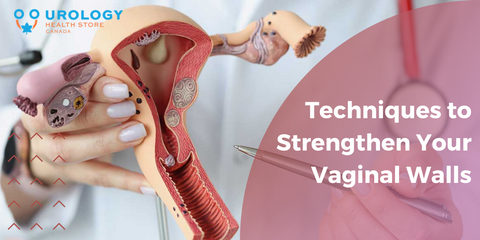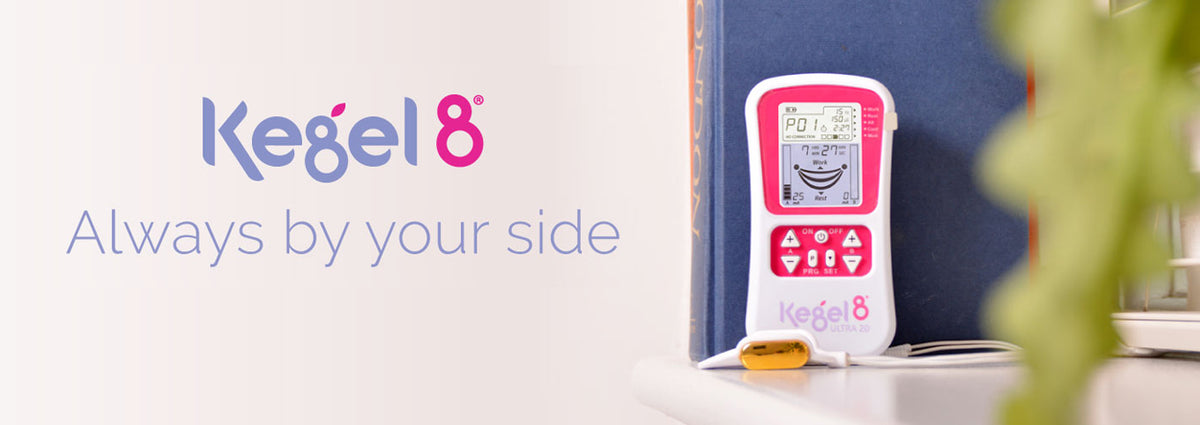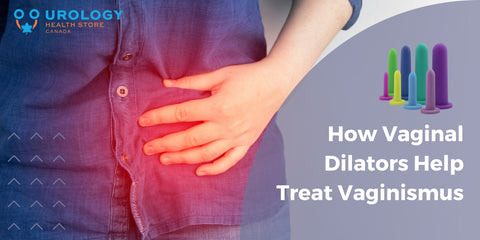Throughout our lifetimes, our bodies inevitably undergo transformations as part of the natural aging process. Nonetheless, there are certain changes we encounter for which we are entirely unprepared, and concealing them becomes difficult. These changes can significantly affect our self-assurance and emotional well-being, even encroaching upon our intimate relationships and other interpersonal connections.
A woman's body is a marvel of strength and resilience, and this extends to the vaginal walls. However, factors like aging, childbirth, and hormonal fluctuations can result in weakened vaginal muscles, impacting not only a woman's self-esteem but also her intimate health. In this blog, we will delve into the reasons behind weakened vaginal walls and explore a range of methods and solutions to strengthen them.
Fortunately, if you've noticed changes in your intimate well-being, there are exercises that can come to your aid, enabling you to regain that sense of vitality and tone your vaginal muscles in the comfort of your own home.
What are the causes of Vaginal Looseness?

Understanding the various factors that can contribute to vaginal laxity and vaginal looseness is essential for women to make informed choices about addressing this issue and taking steps to strengthen their vaginal muscles for improved intimate well-being. A loose vagina, often referred to as vaginal laxity or vaginal looseness, can result from various factors. Here are some descriptive reasons for your blog:
Childbirth: The act of giving birth can place tremendous pressure on the vaginal muscles and tissues. During natural childbirth, the stretching and potential tearing of these tissues can lead to a looser feeling in the vagina.
- Aging: As women age, their bodies undergo natural changes, including a reduction in collagen and elastin production. This decrease in these essential proteins can cause the vaginal walls to lose some of their elasticity and tightness.
- Hormonal Changes: Hormonal fluctuations, particularly during menopause, can result in a decrease in estrogen levels. This hormonal shift can lead to thinning and drying of the vaginal tissues, making the vagina feel less tight.
- Excessive Weight Fluctuations: Significant weight gain and loss can affect the pelvic area and lead to a looser vaginal sensation. The stretching and relaxation of the pelvic floor muscles can contribute to this changes.
- Inadequate Exercise: A sedentary lifestyle and lack of regular exercise, particularly exercises that target the pelvic floor, can contribute to weakened vaginal muscles and reduced tightness.
- Medical Procedures: Certain medical procedures or surgeries involving the pelvic area, such as hysterectomies, can inadvertently affect the integrity of the vaginal muscles and tissues.
Why is vaginal tightening essential to a healthy pelvic floor ?
Vaginal tightening is indeed essential for a healthy pelvic floor. The pelvic floor comprises a network of muscles, ligaments, and tissues that provide crucial support for various organs in the pelvis, including the bladder, uterus, and rectum.
Vaginal tightening plays a vital role in maintaining a healthy pelvic floor and provides a plethora of benefits. This intricate network of muscles, ligaments, and tissues provides crucial support for the pelvic organs, including the bladder, uterus, and rectum. When these pelvic floor muscles are strong and toned, they effectively keep these organs in their proper positions, preventing issues such as pelvic organ prolapse, where organs may shift or descend into the vaginal canal.
Moreover, vaginal tightening exercises, such as Kegel exercises, offer a range of benefits. These exercises not only help in preventing stress incontinence, which is characterized by leakage during activities like coughing or sneezing, but also combat urge incontinence, characterized by sudden and frequent urges to urinate. By strengthening the pelvic floor, these exercises can significantly improve bladder and bowel control.
In addition to these advantages, vaginal tightening exercises are also known to relieve the symptoms of vaginal atrophy, such as dryness, irritation, and discomfort, which are common during menopause. Beyond physical health, a toned pelvic floor can lead to enhanced sexual function, increasing sensitivity and sexual pleasure, and contributing to an improved overall sexual experience.
How do I tighten my Vagina?
Tightening your pelvic floor is a crucial step in addressing issues like vaginal laxity, incontinence, and enhancing your overall well-being. Fortunately, there are simple yet effective exercises that can help you achieve this. Here is a starters guide to strengthening your pelvic floor:
Kegel Exercises:

Kegel exercises are tried and true method for strengthening the pelvic floor muscles and will be typically the first suggestion from a pelvic floor therapist or your MD. Follow these steps to get started! If you would like to learn more on how to strengthen your pelvic floor muscles visit our blog.
- Identify the Muscles: The first step is to locate your pelvic floor muscles. You can do this by stopping the flow of urine mid-stream the next time you use the restroom. This feeling of the muscles tightening around your vaginal is the sensation you want to feel when doing kegels. To get a little more advanced you should do the same as if you were trying to stop yourself from passing gas. once you isolated both you want to try and do both at the same time. The sensation should feel as if your are squeezing muscles and pulling that squeeze towards your belly button.
- Practice Regularly: Once you've identified the muscles, practice squeezing and lifting them without tensing your abdomen, buttocks, or thighs. Start with a set of 10 repetitions, holding each squeeze for about 5 seconds, and then relaxing for the same duration. Gradually increase the number of repetitions and the duration of each hold as your muscles become stronger.
- Routine Matters: Just like with working out in a gym, routine matters. Incorporate Kegel exercises into your daily functions, doing them multiple times a day. Once you get really good at them, you will be able to conduct them discreetly while sitting or standing.
Vaginal Rejuvenation Surgery (Vaginoplasty)
In certain extreme situations or as an effort to enhance personal comfort, individuals may opt for vaginal rejuvenation surgery. One common procedure for vaginal rejuvenation is known as vaginoplasty, aimed at tightening the vaginal walls.
It's crucial to approach this decision with careful consideration. Before consulting a surgeon, it's highly advisable to engage in a serious conversation with your doctor and a mental health professional. This discussion should encompass the potential risks, implications, and the underlying need for such a procedure.
The Power of Pelvic Stimulation with the Kegel 8
While traditional Kegel exercises are an excellent way to strengthen your pelvic floor, some individuals may find it challenging to achieve the desired results or maintain a consistent routine or tough to target the correct muscles and feel demotivated. It's worth noting that more than 50% of women struggle with understanding how to perform a proper pelvic floor muscle contraction. This is where pelvic stimulation, particularly with the Kegel 8 device, can be a game-changer for your pelvic floor and vaginal looseness.
Kegel 8 offers a solution that precisely targets your pelvic muscles, delivering viable improvements in under 12 weeks! With over 20 clinical programs and a complete how to guide created by world renowned pelvic therapist Amanda Savage will empower you to stay on track and deliver the results you are looking for.






